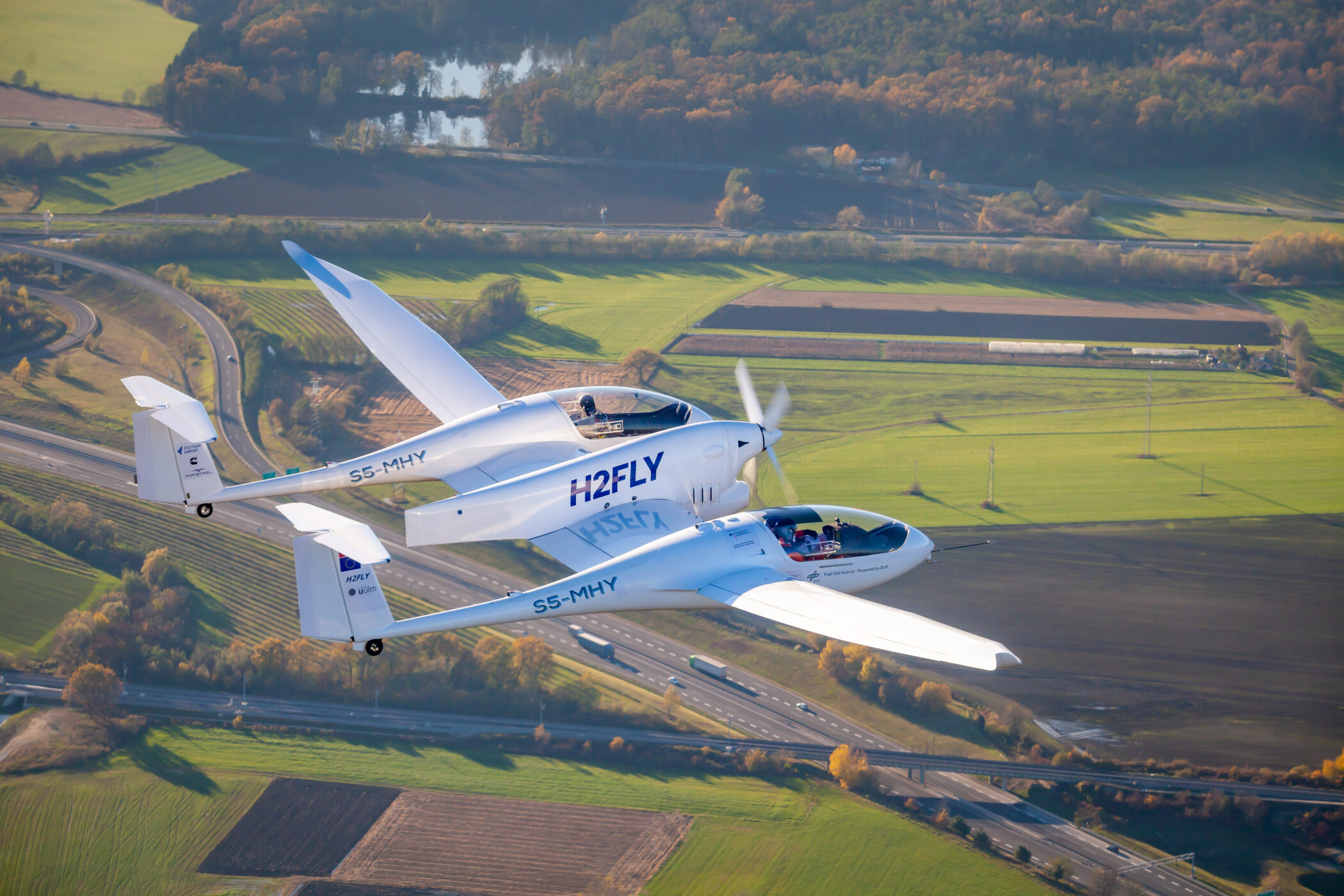A prototype aircraft from H2fly has flown successfully with a CO2-emission free fuel source, unlocking the era of more sustainable air travel. Gemma Harris reports
H2fly – a German-based start-up and subsidiary of Joby Aviation, has achieved a significant aviation milestone, completing the world’s first piloted electric aircraft flight powered entirely by liquid hydrogen.
(Blue Origin space flights are also powered by hydrogen and liquid oxygen, meaning the engine runs clean with water vapor as the only exhaust, and no carbon emissions.)
The HY4 prototype aircraft departed from Maribor in Slovenia in September, and carried out a “safe and efficient” operation throughout multiple test flights. Four test flights were carried out throughout the flight test campaign, including one that lasted for over three hours.
The innovative aircraft uses liquid hydrogen to power a hydrogen electric fuel cell propulsion system and cryogenically stores the liquid hydrogen. Used to replace pressurised gaseous hydrogen, the liquid hydrogen significantly lowers tank weights and volume, boasting a hypothetically increased range, doubling from 750km to 1,500km.

Professor Josef Kallo, co-founder of H2fly, says: “This achievement marks a watershed moment in using hydrogen to power aircraft. Together with our partners, we have demonstrated the viability of liquid hydrogen to support medium and long-range emissions-free flight.” The news shows promise for a more sustainable aviation future. Moving forward, H2fly will work on commercialising its aircraft and fuel technologies. “We are now looking ahead to scaling up our technology for regional aircraft and other applications, beginning the critical mission of decarbonising commercial aviation,” Kallo added.
The news shows promise for a more sustainable aviation future. Moving forward, H2fly will work on commercialising its aircraft and fuel technologies. “We are now looking ahead to scaling up our technology for regional aircraft and other applications, beginning the critical mission of decarbonising commercial aviation,” Kallo added.
Pierre Crespi, Innovation director at Air Liquide Advanced Technologies, highlighted the significance of this achievement: “Air Liquide is proud to have designed, manufactured and integrated, together with H2fly, the liquid hydrogen tank that enabled to power the HY4 aircraft.”
“The success of this demonstrates the full potential of liquid hydrogen for aviation. Liquid hydrogen can be stored onboard and transported. Hydrogen is the key to the energy transition, and this new step proves it’s already becoming a reality,” he adds.
The accomplishment is the culmination of project HEAVEN, a European-government-supported consortium led by H2fly assembled to demonstrate the feasibility of using liquid, cryogenic hydrogen in aircraft. Partners include Air Liquide, Pipstrel Vertical Solutions, the German Aerospace Center (DLR), EKPO Fuel Cell Technologies, and Fundacion Ayesa.
The project received funding from various organisations, including the German Federal Ministry for Economic Affairs and Climate Action (BMWK), the German Federal Ministry for Digital and Transport (BMVD) and the University of Ulm.
The company recently announced the development of new H2F-175 fuel cell systems capable of providing power for flights achieving altitudes of up to 27,000ft, marking a significant step into real-world commercial application.
Looking ahead, H2fly has plans to establish the Hydrogen Aviation Center at Stuttgart Airport, scheduled to open late next year. This central facility will enable state of the art concepts in zero emission hydrogen-electric aviation and test them on the ground. This will serve as a pivotal hub for the future of Europe’s aviation industry and the hydrogen economy.
